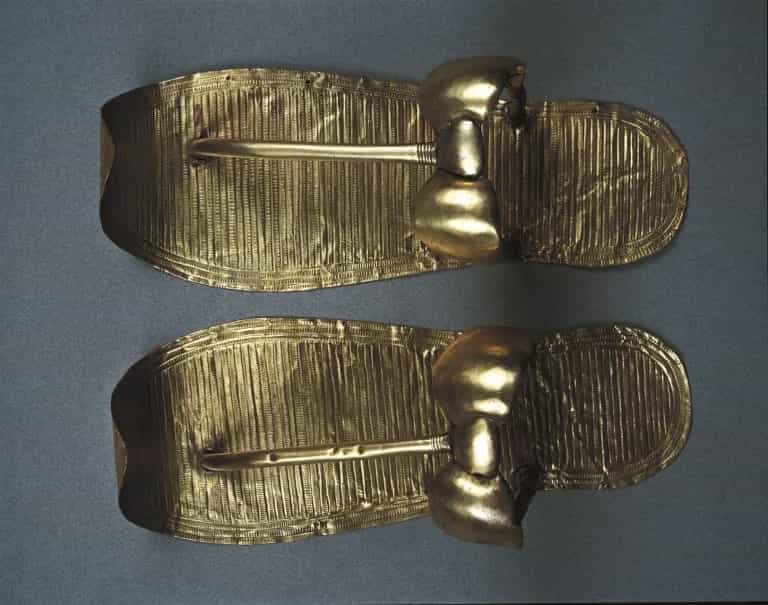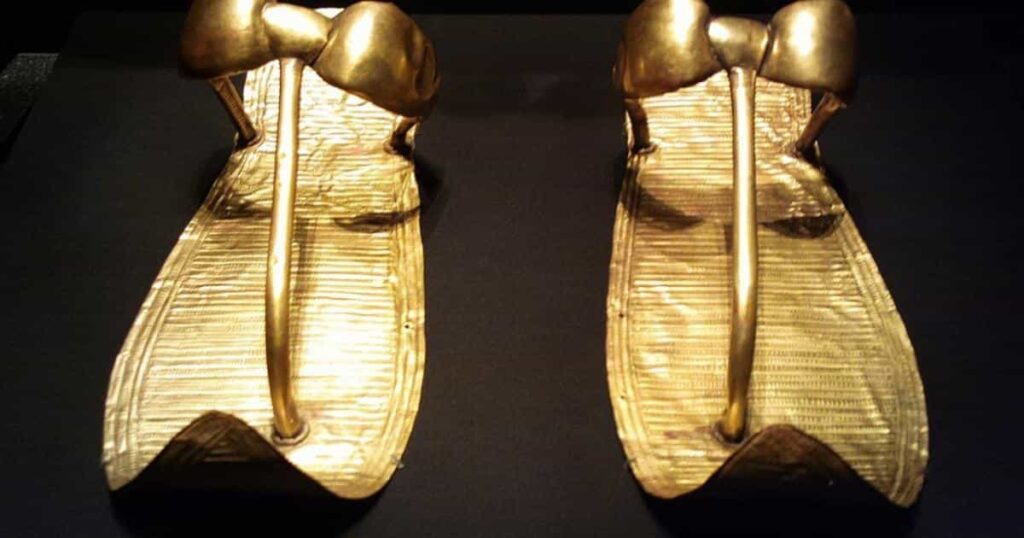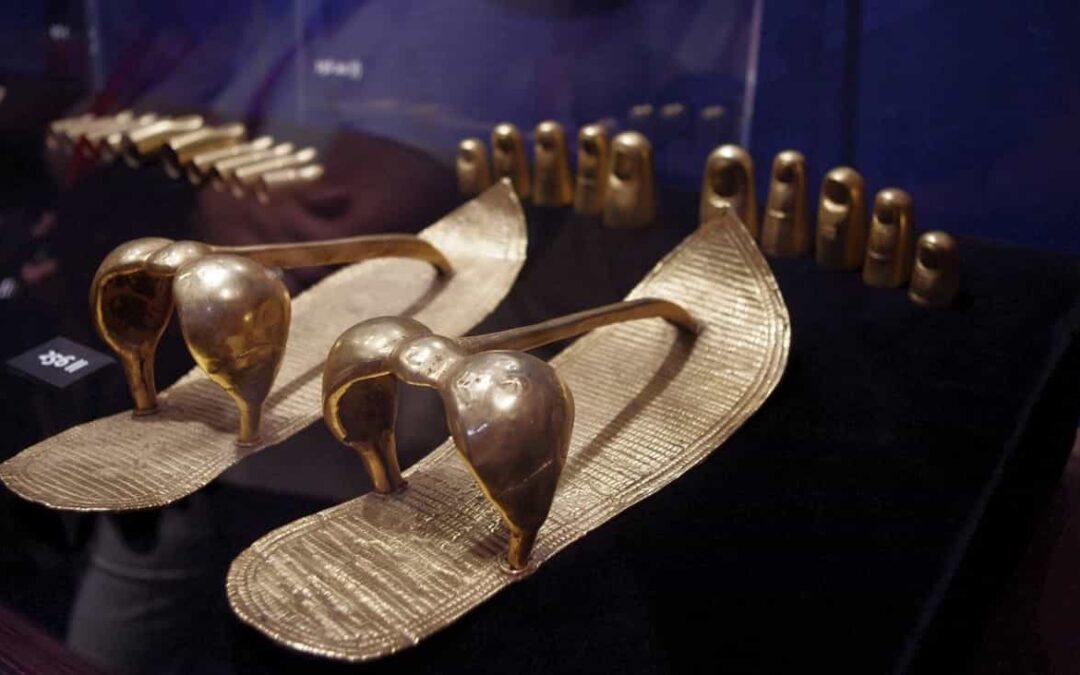The golden sandals of Tutankhamun have captivated the world with their stunning beauty and historical significance. Out of the 42 pairs of sandals found in the tomb, the golden pair was found on the king’s feet, protected by the embalming process.
The application of various ointments caused severe damage to the mummy’s tissue, except for the parts covered in gold, including the face, fingers, and toes.
The gold sheaths on the toes were covered by the golden sandals, which were placed on the feet while incantations were recited by a lector priest. The purpose of these incantations was to give the king the power to trample his enemies in the afterlife.
The final stage of embalming involved bandaging, where each finger and toe was wrapped, followed by each limb, and finally, the whole body.
The golden sandals found on King Tut’s feet were designed to imitate the favored palm leaf, grass, and papyrus sewn sandals of the time. This design can also be seen in statues depicting the king wearing the White Hedjet Crown of Upper Egypt.
The golden sandals have intricate engravings that replicate woven reeds and were created specifically for the afterlife. When Howard Carter uncovered the mummy, the golden sandals still covered the king’s feet.
These incredible artifacts, dating back to the New Kingdom, late 18th Dynasty, and the reign of King Tutankhamun (ca. 1332-1323 BC), are now displayed at the Egyptian Museum in Cairo.









